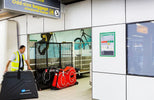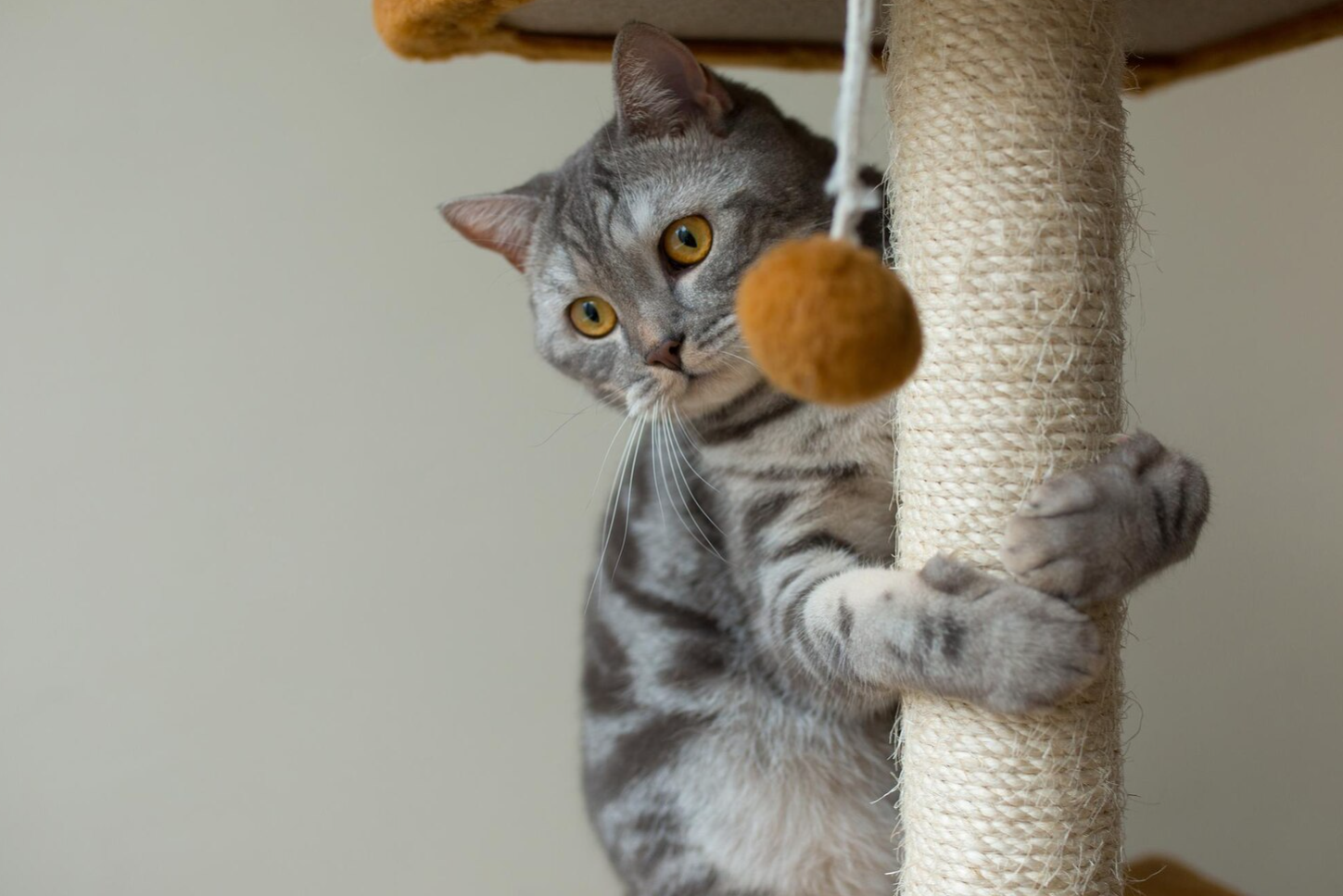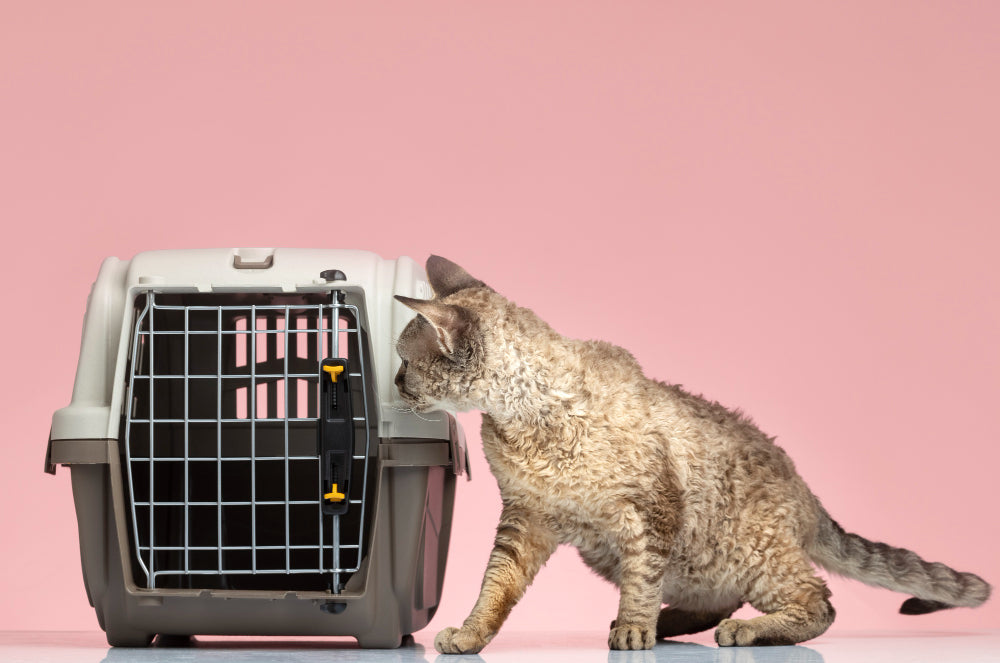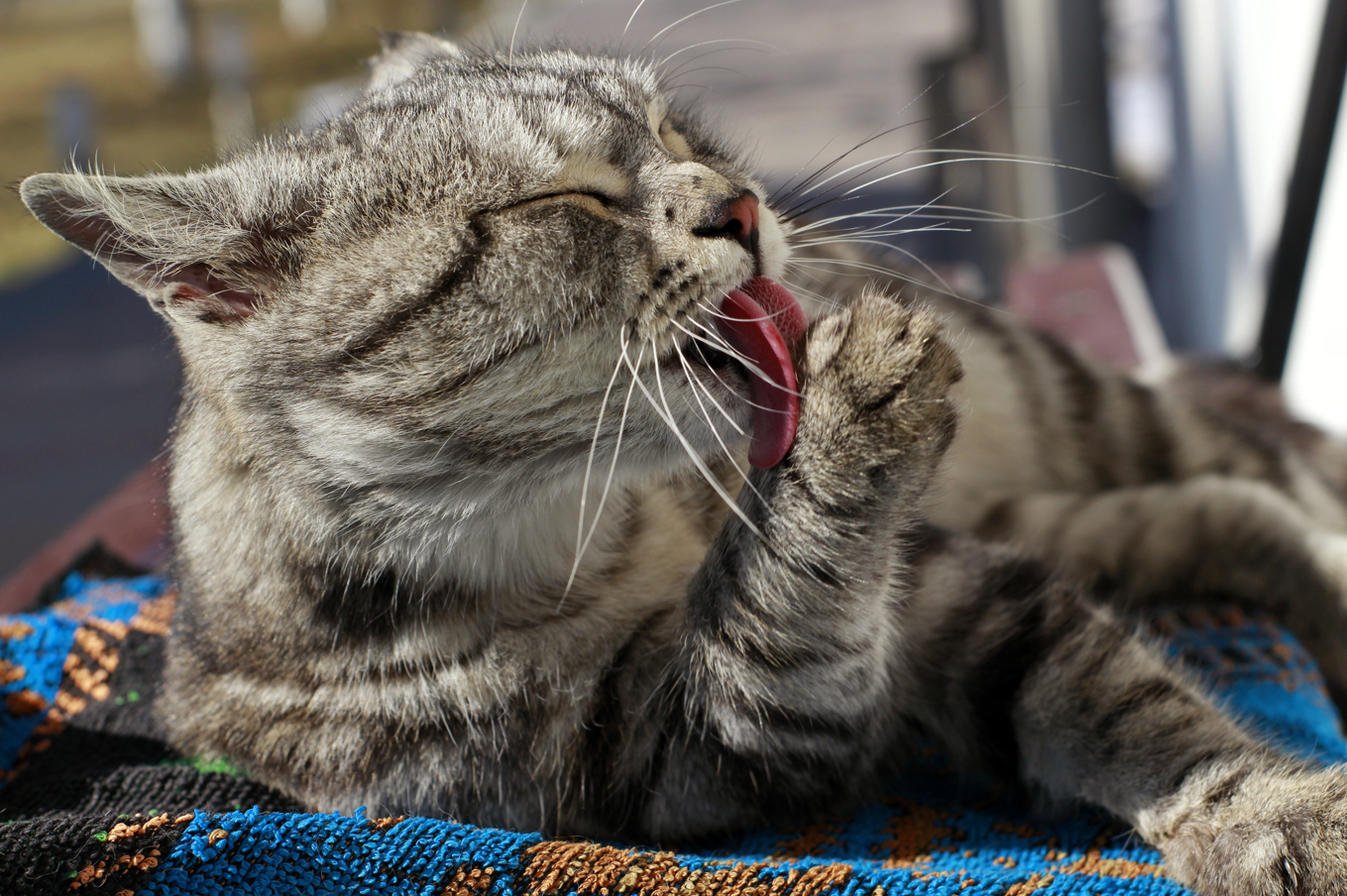
How to fly with your dog? Everything you need to know (for large dogs in the cargo hold)
, by Michael van Wassem, 6 min reading time

, by Michael van Wassem, 6 min reading time
Flying with your dog requires preparation, especially if you have a larger dog that needs to travel in the cargo hold. This article will guide you step-by-step through what you need to arrange, what to pay attention to, and how to prepare your dog for this exciting experience.
Most airlines have a weight limit of 8 kg for dogs in the cabin (including bag or kennel). If your dog is heavier or larger, it will travel in the cargo hold of the plane, in a special area that is pressure and temperature controlled.
Please note: dogs with flat snouts (such as a pug or French bulldog) are often not allowed in the cargo hold due to their breathing difficulties. Always check the rules of your airline.
For transport in the cargo hold, an IATA-approved kennel is required. This must:
be large enough for your dog to stand, turn around, and lie down
be sturdy, well-ventilated, and leak-proof
not having wheels (or being lockable)
👉 View suitable crates via Fidello: flying with your dog
A good tip: put a soft cushion and, for example, a worn T-shirt of yours in the crate. Your scent can have a calming effect. This may not be scientifically proven, but it works surprisingly well in practice.
Let your dog get used to the crate gradually. Start simple:
Hide some tasty snacks (like cheese) in the bench.
Let your dog discover and retrieve these items on their own.
Practice short sessions regularly where you leave your dog in the crate for a while.
Don't use coercion, make it a positive experience.
Does your dog crate have wheels? This can be exciting for your dog. Remove the wheels (as with Fidello models) or lock them to prevent movement for better stability.
An airport like Schiphol is busy, full of sounds, suitcases, people, and unfamiliar smells. Train your dog for this:
Start in a quiet shopping center or train station.
Just let your dog sit and observe, give it a snack occasionally.
Gradually increase the stimuli by going to busier places.
Don't force anything – rest and safety come first.
At Schiphol Airport, you check in your dog at the "Odd-size baggage" counter. This is a separate area for oversized baggage, such as large suitcases, musical instruments – and therefore travel crates with dogs. You must check in your dog, so first go to the check-in counter with your dog. They usually call the odd-sized baggage staff immediately to let them know that a dog is arriving. Your crate will be checked there. Keep your dog's passport handy during check-in.
Make sure you arrive on time and allow extra time for the delivery and inspection of the bench.
As soon as you board, it's crucial to immediately inform the flight attendant that you have a dog in the cargo hold. Explicitly ask them to confirm that your dog has been safely loaded. This isn't just for your peace of mind: the pilots need to be aware of a dog in the cargo hold so they can correctly adjust the pressure and temperature in the animal compartment. Clearly state that you want confirmation from both the cabin crew and the pilot. In most cases, the pilot will personally respond, or you will receive verbal confirmation from the crew once they have been informed. Wait for this confirmation before fully relaxing – your dog's well-being begins even before takeoff.
Your dog will stay in a special, temperature-controlled compartment. This is safe, but it can still be stressful. Therefore:
Freeze a water bowl beforehand: this way it melts slowly and your dog will have water during the flight.
Only give a light meal on the day of the flight.
Do not use any sedatives unless prescribed by a veterinarian.
👉 Handy accessories for on the go: Dog water bottles
After landing, your dog is usually unloaded last. This is intentional: this way the dog gets the most attention and the staff don't have to rush. Wait patiently at the baggage carousel and ask a staff member for help if necessary.
Once you have your dog back:
Take him out of the bench right away.
Let him burn off some energy.
Give them some water and take them outside immediately for a potty break.
Please note: in hot countries, overheating can occur quickly. Dogs cannot sweat, so keep an eye on shade and cooling.
For travel within the EU, you will need:
EU animal passport
Valid rabies vaccination (at least 21 days old)
If necessary, a health certificate from your veterinarian (depending on the company).
Extra rules apply to countries outside the EU, so check this in advance.
In short: flying with your dog requires planning, training, and above all, a lot of patience. But with the right preparation and tools, you can give your dog a safe and as stress-free a journey as possible.
Check out the right benches, accessories and helpful tips here:
Fidello: Flying with your dog
Fidello: Drink bottles for on the go


